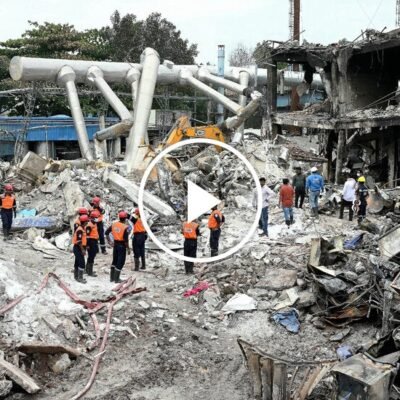What if your next surgery had more in common with a flight simulator than a scalpel?
That’s not science fiction. It’s software engineering meeting surgical precision, where augmented reality (AR) and virtual reality (VR) aren’t just buzzwords, they’re becoming life-saving tech.
In fact, the global AR/VR in healthcare market is projected to hit $19.6 billion by 2030, growing at a CAGR of 26.9% from 2023. And a big chunk of that? It’s going into surgical navigation, where every pixel could mean the difference between risk and recovery.
Think of AR/VR imaging in surgery like Google Maps with X-ray vision, only instead of finding a coffee shop, it’s guiding a surgeon around arteries, nerves, and tumors. And behind that miracle of modern medicine? Hardcore engineering.
Real-time 3D rendering, latency-busting pipelines, computer vision fused with multimodal imaging all stitched together in environments where failure isn’t an option.
This isn’t just innovation. This is the reprogramming of what surgery looks like. In this post, we’ll break down the software side of surgical navigation: how tech teams are building immersive systems that empower surgeons to operate with unmatched clarity and control.
Let’s get under the hood.
The Tech Stack: What Powers Surgical AR/VR?
Under the hood, AR/VR surgical platforms are a blend of emerging technologies. Here’s what’s running behind those surgeon’s smart glasses:
- 3D Imaging & Reconstruction: Using MRI, CT, and PET scans converted into dynamic 3D models via algorithms like Marching Cubes, surface rendering, and volume rendering.
- Real-Time Rendering Engines: Unity and Unreal Engine (yes, the same ones used in gaming) power ultra-realistic, interactive visuals—optimized for <20ms latency to ensure surgical precision.
- SLAM + Spatial Mapping: Simultaneous Localization and Mapping (SLAM) algorithms, fused with depth sensors and LiDAR, to understand the operating room in real-time 3D.
- Latency-Optimized Data Pipelines: Edge computing, GPU acceleration (CUDA/OpenCL), and real-time messaging protocols like DDS (Data Distribution Service) keep the system responsive and scalable.
- AR Interfaces + Mixed Reality HMDs: Devices like Microsoft HoloLens 2, Magic Leap, and even custom MR headsets, tailored to deliver surgeon-specific UI overlays.
- Computer Vision + AI: Object detection and segmentation models (often U-Net, Mask R-CNN variants) identify critical anatomy—enhancing spatial awareness and reducing risk.
Real-World Applications: From Incision to Innovation
Orthopedic Surgery: AR helps visualize implants and bone structures before a single cut is made. Systems like HipInsight are already FDA-approved.
Neurosurgery: Precision is everything. AR overlays brain scans in real-time to avoid critical areas during tumor removal or epilepsy treatment.
Cardiac Procedures: Mixed reality maps out arteries and catheter paths. Surgeons can “see through” the patient’s chest without invasive imaging.
Remote Assistance & Telepresence: Senior surgeons can guide operations remotely in real-time with AR pointers and annotations.
Engineering Challenges: Where the Code Gets Complicated
Data Volume & Throughput: Surgical imaging datasets are massive. Real-time AR requires constant high-speed read/write cycles, demanding top-tier I/O and compression strategies.
Latency vs. Accuracy: The tech must balance surgical accuracy (millimeter precision) with system responsiveness. One dropped frame can change an outcome.
Device Limitations: Head-mounted displays need to stay lightweight, wireless, and cool—while running complex rendering pipelines and computer vision models.
Calibration & Registration: Aligning virtual overlays with physical anatomy (called “image registration”) is notoriously hard, especially when organs shift in real-time.
Security & Compliance: HIPAA, FDA, CE compliance—these aren’t checkboxes. They’re embedded into the software architecture from day one.
How Tech Teams Are Building Immersive Systems That Empower Surgeons
1. Turning Medical Imaging into Interactive 3D Models
It starts with raw data—MRI, CT, and PET scans. These are massive and 2D. Engineers use image processing algorithms like:
- Marching Cubes & Volume Rendering to generate 3D structures
- Segmentation models (e.g. U-Net) to isolate anatomy like organs, vessels, and tumors
- Registration techniques to align these 3D models with the patient’s real-world body in AR
2. Real-Time Rendering with Zero Lag
Surgeons don’t wait for loading screens. Tech teams optimize render engines like Unity or Unreal Engine for:
- <20ms latency
- Frame rates of 60–90fps
- GPU-accelerated performance using CUDA/OpenCL
This ensures every movement, gesture, or tool adjustment by the surgeon is reflected instantly in their AR/VR display.
3. Spatial Awareness & SLAM Technology
To maintain environmental awareness in the operating room:
- SLAM (Simultaneous Localization and Mapping) is deployed
- Depth sensors and cameras build a live 3D map of the space
- The system adjusts visuals in real-time based on user movement and object positioning
4. Designing Context-Aware User Interfaces
UI/UX in surgical AR is zero-tolerance—cluttered, confusing interfaces are a liability.
- Voice commands, hand gestures, and eye tracking help control data overlays
- UIs are dynamically responsive, showing only contextually relevant data (e.g., distance to a nerve bundle during dissection)
- Interfaces are built using custom frameworks or toolkits like MRTK (Mixed Reality Toolkit)
5. Integrating AI for Predictive Guidance
AR/VR isn’t just a viewer—it’s a real-time advisor.
- AI models trained on thousands of procedures can suggest optimal incision paths
- Anomaly detection warns when anatomy deviates from plan
- AR annotations appear in the surgeon’s field of view, updated live by the AI
6. Hardening for Compliance & Data Security
All this innovation happens under strict constraints:
- HIPAA compliance is baked into data storage and transmission
- End-to-end encryption protects live feeds and patient records
- Systems go through FDA approval cycles and risk audits
Engineering teams treat compliance like a core feature, not a footnote.
Where Software Meets Scalpel
At ISHIR, we believe the most meaningful innovations happen at the intersection of deep tech and human need. Surgical AR/VR is one of those spaces where precision software quite literally saves lives.
If you’re building the next-gen AR/VR platform for healthcare—or looking to integrate real-time imaging into surgical workflows—we’re the engineering team that thrives in these high-stakes, high-impact environments.
Transform Surgical Care with Precision-Engineered AR/VR Solutions
Collaborate with ISHIR to bring your high-impact healthcare innovations to life—where cutting-edge software meets clinical excellence.
The post AR/VR Imaging for Surgical Navigation: Enhancing Precision in Real-Time appeared first on ISHIR | Software Development India.




